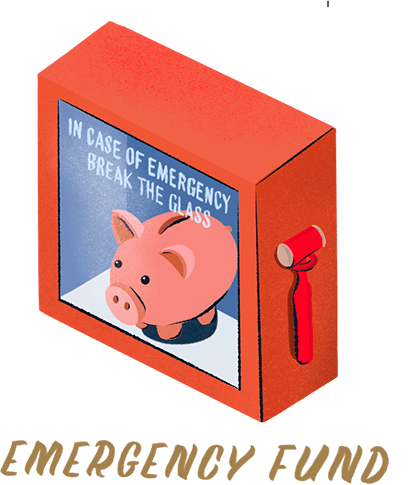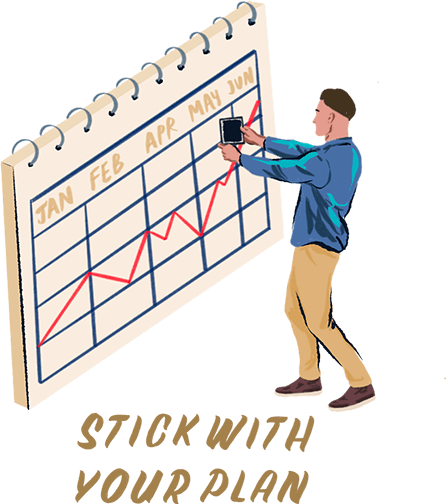
When you think about being well, you might think about having a good night’s sleep, eating more vegetables, meditating, or committing to an exercise plan. But there’s one aspect of wellness that doesn’t quite come to mind naturally: financial wellness.
Think about it. When you’re financially stressed – living paycheck to paycheck; staying in a bad relationship (work or otherwise) because you cannot afford to leave; or dealing with a mountain of debt – your physical and emotional well-being gets compromised too.
Financial wellness is the foundation for your overall well-being. And like most important things, it’s a journey not an end destination.
If you’re ready to build a strong financial foundation, look no further.
1: Start a budget
Having a budget is the first step towards financial wellness. It acts as a guide for your money, and helps you understand how you’re saving and spending it.
Many financial experts recommend trying out the 50/30/20 plan. It involves saving and investing 20% of your income every month, setting aside 50% for essentials like utilities, food and transport, and spending 30% for discretionary items like dining and entertainment.
If you find it hard to stick to a budget, the best way is to automate your savings. When your paycheck comes in each month, set up an automatic recurring transfer to divert at least 20% of it into a separate account.
2: Get covered and pay down high-interest debt
Being financially well also includes making sure you have enough term life insurance, especially if you have young children. Depending on your family’s needs, you may also want to add on health insurance or critical illness coverage.
If you have high-interest debt (more than 5% monthly interest), like credit card bills, tackle them first. Try to pay more than the minimum required payments and clear them as soon as you can. The longer you take, the more in interest you’re paying – money that you could be spending on other things that matter to you.
3: Set up an emergency fund

Life is unpredictable. As such, financial wellness means having an adequate emergency fund.
How much money to set aside depends on your lifestyle and financial situation. Generally, the rule of thumb is at least three months of living expenses. A larger emergency fund is recommended if you’re facing more uncertainties in your financial life.
But if you’re financially stable, keeping too much cash in the bank may not be the most effective use of your money, as we’ll cover in the sections below.
Finally, keep your emergency fund in an account you can withdraw from anytime you need. A cash management portfolio like Syfe Cash+ could be a good option. At a projected return of 1.5% per year, Syfe Cash+ offers better returns than most bank savings accounts.
4: Think about your goals

What should your financial wellness roadmap help you to achieve? Do you want to save for a wedding? Send your child overseas for further studies? Retire at age 55?
Make a list of your goals and try to be as specific as you can. For example, “Save $40,000 in five years for a home down payment.”
Next, sort them into short- and long-term goals. Short term goals typically take two years or less to accomplish, such as saving up for a trip to Europe next year.
Medium- to long-term goals could take three years or more. Simply saving more money might not be enough. Instead, you’ll be able to achieve them more efficiently through investing.
5. Invest for your goals
Keeping too much cash in the bank can be bad for your wealth.
When you invest, you’re growing your money and giving yourself the chance to make more in the long run.
One simple investing approach to consider is Core-Satellite.

In general, a good core investment should be well-diversified across stocks, bonds and commodities, with exposure to different sectors and geographies.
Satellites complement your core, and offer targeted exposures to certain sectors or themes you’re optimistic about.
6. Consistency is key for financial success
Just as Rome wasn’t built in a day, it takes time to see the fruits of your investments.
Many people think investing is a way to get rich quickly. They put money in a portfolio and expect to see immediate results. At the first sign of market volatility, they panic and sell their holdings.
These people aren’t true investors. True investors know that investing is a long-term endeavor. Markets can go up and down one day to the next, but staying invested almost always means you come out on top.

One easy way to stick with your investment plan is through dollar cost averaging. You invest a smaller sum at regular intervals, say $1,000 per month, regardless of how the markets are behaving.
Over time, the costs of all your investments are averaged out and you reap the benefits of time in the market.
Start practising financial wellness today
Everyone deserves financial wellness. No matter where you are in life, it’s never too early or too late to prioritise your financial health.
Syfe can help you on your journey to financial wellness. It’s easy to start investing with our no lock-in, no minimum investment, and free withdrawals.
The next time you drink that green smoothie or try the meditation app, give yourself a pat on the back knowing that your financial wellness is already taken care of.






You must be logged in to post a comment.